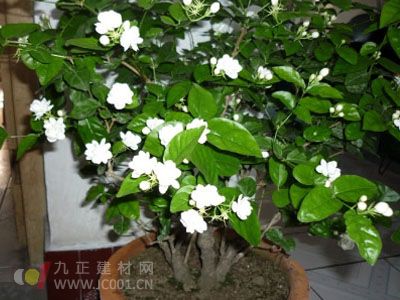Jasmine is a semi-evergreen shrub. Terminal cymose, white flowers, fragrant, flowering from summer to autumn. The south is planted in the courtyard, and the north is suitable for potted flowers. Potted jasmine should be changed every year or every other year in the early spring. The potting soil can be mixed with humus soil and sandy loam soil, and a small amount of crushed cake fertilizer and bone powder are added as base fertilizer. In combination with changing pots, the branches can be kept about 15 cm long, and the rest can be cut off. At the same time, the dense branches, diseased branches, dead branches, and old leaves are removed, and the new branches and new leaves are promoted. More flower buds.
After the end of the spring in the north, the sun is sheltered from the sun. Watering should be "see dry and wet", avoiding the roots of the soil and causing rotten roots. After the summer, the amount of water should be gradually increased. In the summer, in addition to pouring water for 1~2 times per day, it is necessary to spray water to the leaf surface 2~3 times a day to increase the air humidity. If the water supply is insufficient and the air is dry, it will affect growth and flowering. From the end of September, gradually reduce the amount of watering, so that the branches are full and mature, in order to facilitate wintering. In the winter, it is necessary to control the watering and keep the basin soil slightly moist.

A 0.2% aqueous solution of ferrous sulfate was poured 10 to 14 days during the growth period to keep the potting soil acidic. The leaves and leaves can flourish, the leaves are pure, the flowers are fragrant, and the flowers are large.
Jasmine is suitable for fertilization. From the beginning of spring germination, until the end of September, it is advisable to apply a decomposed cake fertilizer every 7 to 14 days. During the bud stage, the liquid fertilizer containing more phosphorus is applied. Fertilization is generally stopped from the beginning of October.
Before the frost falls, the flower pots will be moved into the indoor sunny place. When entering the room, pay attention to the frequent opening of the window to avoid the yellowing of the leaves. The room temperature is maintained above 10 ° C during the winter. Blade peeling occurs due to temperatures below 10 °C for a long period of time.
Our LED Emergency Twin Spot Lights are a cost effective replacement for old fashioned halogen emergency twin spot fittings. Due to the low power consumption of the LED lamps, only one battery is required, reducing option during charging. The super bright adjustable heads make this twin spot ideal for commercial and industrial applications. with a self test feature every 90 days to ensure correct operation. The Led Emergency Lights design makes it quick and simple to install.
Twin Spot Emergency Light,Emergency Twin Spot,Led Twin Spot Emergency Lights,Led Emergency Twin Spot Light
Foshan Nai An Lighting Electric Co.,ltd , https://www.emballast.com